Resonant method of wireless transmission of electric energy by Nikola Tesla
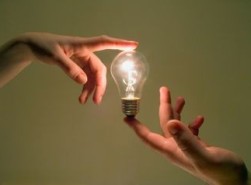 At the beginning of the 20th century, scientist Nikola Tesla, a native of Croatia, then working in New York, developed an innovative method for transmitting electric energy over long distances without wires, using the phenomenon of electrical resonance, the study of which the scientist then paid special attention. Prior to this, he had already sufficiently studied the possibilities of alternating current, and clearly understood the technical prospects of its application, but there was another important step ahead - a system for wireless transmission of electrical energy.
At the beginning of the 20th century, scientist Nikola Tesla, a native of Croatia, then working in New York, developed an innovative method for transmitting electric energy over long distances without wires, using the phenomenon of electrical resonance, the study of which the scientist then paid special attention. Prior to this, he had already sufficiently studied the possibilities of alternating current, and clearly understood the technical prospects of its application, but there was another important step ahead - a system for wireless transmission of electrical energy.
According to the scientist, in such an electric power transmission system, planet Earth acted as an electric conductor, in which standing waves could be excited using electric oscillators (electric oscillatory systems). Tesla came to this conclusion through observations of electrical disturbances propagating over the earth's surface after lightning discharges during a thunderstorm ...
Powerful LED arrays in lighting: device and application features
 Since the development of the first practically applicable LED by the University of Illinois professor Nick Holonyak in 1962, more than half a century has passed, however, the revolutionary invention to this day undergoes progressive changes, becoming more perfect and more technological and useful.
Since the development of the first practically applicable LED by the University of Illinois professor Nick Holonyak in 1962, more than half a century has passed, however, the revolutionary invention to this day undergoes progressive changes, becoming more perfect and more technological and useful.
The electroluminescence of a semiconductor transition, with the recombination of electrons and holes, is now the basis for supereconomic light sources. LED, often called LED (short for English light-emitting diode), lamps are gradually gaining a stable position in the market of modern energy-saving lighting technologies, both for domestic needs, and for enterprises and even for street lighting systems. LED lamps outperform compact fluorescent lamps ...
Electricity and health: how to protect yourself from electromagnetic radiation in everyday life
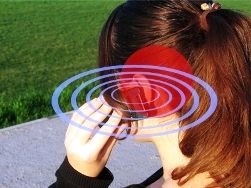 There is still a scientific debate about how our brain works, but researchers have already come to the conclusion that complex electrochemical processes between cells - neurons - are taking place inside us. For the exchange of information using short electrical pulses. They control all the muscles.
There is still a scientific debate about how our brain works, but researchers have already come to the conclusion that complex electrochemical processes between cells - neurons - are taking place inside us. For the exchange of information using short electrical pulses. They control all the muscles.
In this case, a person is constantly exposed to the natural magnetic field of the Earth and electromagnetic waves. He has developed protective reactions in his body to such an effect, but they ... are not unlimited.
Over the past two centuries, people have begun to intensively use electricity and the benefits of civilization, not really worrying about their health. But in vain. The effect of electromagnetic radiation (EMR) on the body is constantly increasing, various diseases appear: nervous depression, weakened immunity, problems with the reproductive system, causeless fear ...
How to protect children from electric shock
 Electricity brings many benefits to man. But it is dangerous, especially for children. If an adult already has a certain life experience and knows basic safety rules, then children, especially small ones, only know this world. They are curious, active, agile, and evaluate everything that surrounds them with their senses.
Electricity brings many benefits to man. But it is dangerous, especially for children. If an adult already has a certain life experience and knows basic safety rules, then children, especially small ones, only know this world. They are curious, active, agile, and evaluate everything that surrounds them with their senses.
Children examine all the objects around them, touch them with their hands, they can stick them in their mouths, lick their tongue or bite their teeth, chew. In this way they gain experience for later life. However, the human senses are not able to determine the presence of tension, and children do not understand its dangers.
Parents and all adults are obliged to create safe conditions for their life, to teach the accurate handling of electrical appliances.Providing these conditions requires a differentiated, individual approach, taking into account children's age. Toddlers under 3-5 years old are usually ...
Where does the electricity flow?
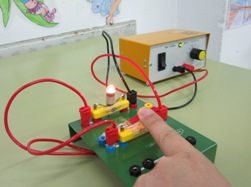 An electric current arises in an electric circuit including a current source and a consumer of electricity. But in what direction does this current occur? It is traditionally believed that in the external circuit the current has a direction from the plus of the source to minus, while inside the power source it is from minus to plus.
An electric current arises in an electric circuit including a current source and a consumer of electricity. But in what direction does this current occur? It is traditionally believed that in the external circuit the current has a direction from the plus of the source to minus, while inside the power source it is from minus to plus.
Indeed, electric current is the ordered movement of electrically charged particles. If the conductor is made of metal, these particles are electrons - negatively charged particles. However, in the external circuit, the electrons move precisely from the minus (negative pole) to the plus (positive pole), and not from plus to minus.
If you include a diode in the external circuit, it will become clear that current is possible only when the diode is connected by the cathode in the direction of the minus. From this it follows that the direction of the electric current in the circuit is taken ...
 The principle of operation of any electric battery is the accumulation of electrical energy during a chemical reaction that occurs when a charging electric current flows through a battery, and the generation of electric energy when a discharge current flows during a reverse chemical reaction.
The principle of operation of any electric battery is the accumulation of electrical energy during a chemical reaction that occurs when a charging electric current flows through a battery, and the generation of electric energy when a discharge current flows during a reverse chemical reaction.
The reversibility of the chemical reaction in the battery allows you to repeatedly discharge and charge the battery. This is the advantage of batteries over disposable current sources, ordinary batteries, in which only discharge current is possible.
An electrolyte is used as a medium for transferring charge from one battery electrode to another, a special solution, due to the chemical reaction of which with the material on the electrodes, both direct and reverse chemical reactions in the battery are possible ...
How to determine unknown transformer parameters
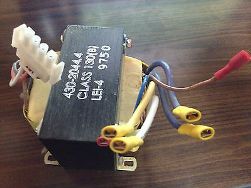 The first thing to do is to take a piece of paper, a pencil and a multimeter. Using all this, ring the transformer windings and draw a diagram on paper. The conclusions of the windings in the picture should be numbered. It is possible that the conclusions will be much smaller, in the simplest case there are only four: two terminals of the primary (network) winding and two terminals of the secondary. But this does not always happen, more often there are several more windings.
The first thing to do is to take a piece of paper, a pencil and a multimeter. Using all this, ring the transformer windings and draw a diagram on paper. The conclusions of the windings in the picture should be numbered. It is possible that the conclusions will be much smaller, in the simplest case there are only four: two terminals of the primary (network) winding and two terminals of the secondary. But this does not always happen, more often there are several more windings.
Some conclusions, although they exist, may not “ring” with anything. Are these windings torn off? Not at all, most likely these are shielding windings located between other windings. These ends are usually connected to a common wire - the "ground" of the circuit.
Therefore, it is desirable to record the winding resistances on the obtained circuit, since the main goal of the study is to determine the network winding. Her resistance is usually greater ...
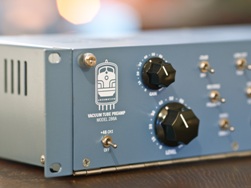 One of the most popular amateur radio designs are sound power amplifiers UMZCH. For high-quality listening to music programs at home, most often they use quite powerful, 25 ... 50W / channel, usually stereo amplifiers.
One of the most popular amateur radio designs are sound power amplifiers UMZCH. For high-quality listening to music programs at home, most often they use quite powerful, 25 ... 50W / channel, usually stereo amplifiers.
Such a large power is not needed at all in order to get a very high volume: an amplifier working at half the power allows for a cleaner sound, distortions in this mode, and even the best UMZCH has them, they are almost invisible.
It is rather difficult to assemble and set up a good powerful UMZCH, but this statement is true if the amplifier is assembled from discrete parts - transistors, resistors, capacitors, diodes, maybe even operational amplifiers.Such a design can be done by a sufficiently qualified radio amateur, who has already assembled not one or two amplifiers ...
